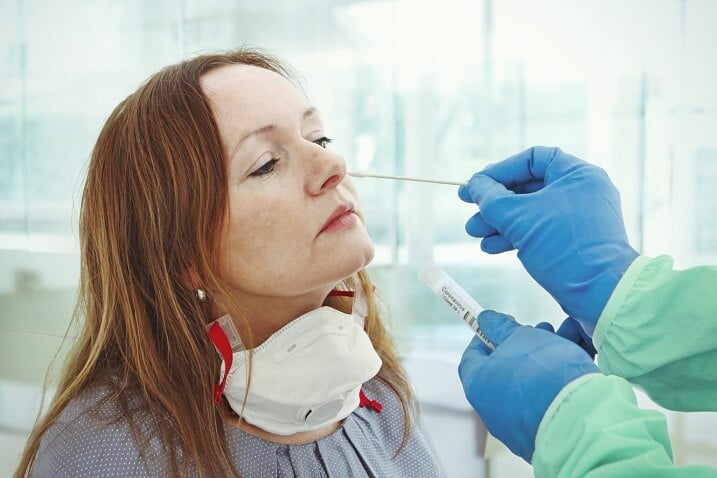By Arjun Walia | The Pulse
A letter to the editor published in the Journal of Infection titled, “The performance of the SARS-C0V-2 RT-PCR test as a tool for detecting SARS-COV-2 infection in the population” states the following:
In light of our findings that more than half of individuals with positive PCR test results are unlikely to have been infectious, RT-PCR test positivity should not be taken as an accurate measure of infectious SARS-C0V-2 incidence. Our results confirm the findings of others that the routine use of “positive” RT-PCR test results as the gold standard for assessing and controlling infectiousness fails to reflect the fact “that 50-75% of the time an individual is PCR positive, they are likely to be post-infectious.
Asymptomatic individuals with positive RT-PCR test results have higher Ct values and a lower probability of being infectious than symptomatic individuals with positive results. Although Ct values have been shown to be inversely associated with viral load and infectivity, there is no international standardization across laboratories, rendering problematic the interpretation of RT-PCR tests when used as a tool for mass screening.
This point has been made many times over the last 15 months. A plethora of scientific publications and scientists all over the globe have been echoing this since the beginning of the pandemic, and I’ve written about it many times since March 2020.
The statement above is why The Swedish Public Health agency has a notice on their website explaining how and why polymerase chain reaction (PCR) tests are not useful in determining if someone is infected with COVID or if someone can transmit it to others. Basically, PCR tests are not designed to detect and identify active infectious diseases. Instead, it identifies genetic material, be it partial, alive, or even dead.
PCR amplifies this material in samples to find traces of COVID-19. If the sample taken from a nasal swab contains a large amount of COVID virus it will be read positive after only a few cycles of amplification, while a smaller sample with small amounts of genetic material will require more cycles to amplify enough of the genetic material to get a positive result. Since the PCR test amplifies traces of COVID-19 through cycles, a lower number of cycles needed to get a positive result suggests the presence of a higher viral load for the person being tested and therefore a higher contagion potential.
An article published in the journal Clinical Infectious Diseases found that among positive PCR samples with a cycle count over 35, only 3% of the samples showed viral replication. This can be interpreted as, if someone tests positive via PCR when a Ct of 35 or higher is used, the probability that said person is actually infected is less than 3%, and the probability that said result is a false positive is 97%. In this case, false positive means a person is not infectious or capable of transmitting the virus to others.
High cycle thresholds have been used throughout this pandemic. Manitoba Canada, for example, has confirmed that it utilizes Ct’s of up to 40, and even 45 in some cases. Dr. Jared Bullard, a paediatric infectious disease specialist, is a witness for the Manitoba government who is being sued for the measures they’ve taken to combat COVID. He has provided testimony regarding the unreliability of PCR testing. You can read more about that here.
Earlier on in the pandemic, 22 scientists/researchers published a report explaining why they believe PCR testing is useless when it comes to identifying an active COVİD infection. This issue has been brought up as far back as 2007 when journalist Gina Kolata published an article in the New York times about how declaring virus pandemics based on PCR tests can end in a disaster. The article was titled Faith in Quick Test Leads to Epidemic That Wasn’t.
Pages and pages could be filled with examples, but in favour of a short read I’ll leave it with the examples pointed out above.
When it comes to PCR testing, the concerns and issues with regards to its mass use for identifying “cases” has been a big problem throughout this pandemic, with many experts in the field urging governments to simply focus on sick people. Further, mainstream media and government scientists, who seem to receive all of T.V. time, have not touched upon this issue at all. Why?
Furthermore, if we couple this information with the fact that asymptomatic spread outdoors, and even indoors, is quite low, something becomes very clear: If we stopped testing people who aren’t sick or symptomatic, there wouldn’t be a “pandemic per say” and the number of “cases” would be dramatically lower.
You could even go as far as saying that that there would be no justification for lockdowns or a justification for the mass vaccination of the population without these “positive” cases. This entire pandemic and the measures that have been put in place by governments to combat it have all been based on “positive cases.”
Something to think about.
This article (“More Than Half of Positive PCR Tests Unlikely To Have Been Infectious” – Journal of Infection) was originally published on The Pulse and is published under a Creative Commons license.

